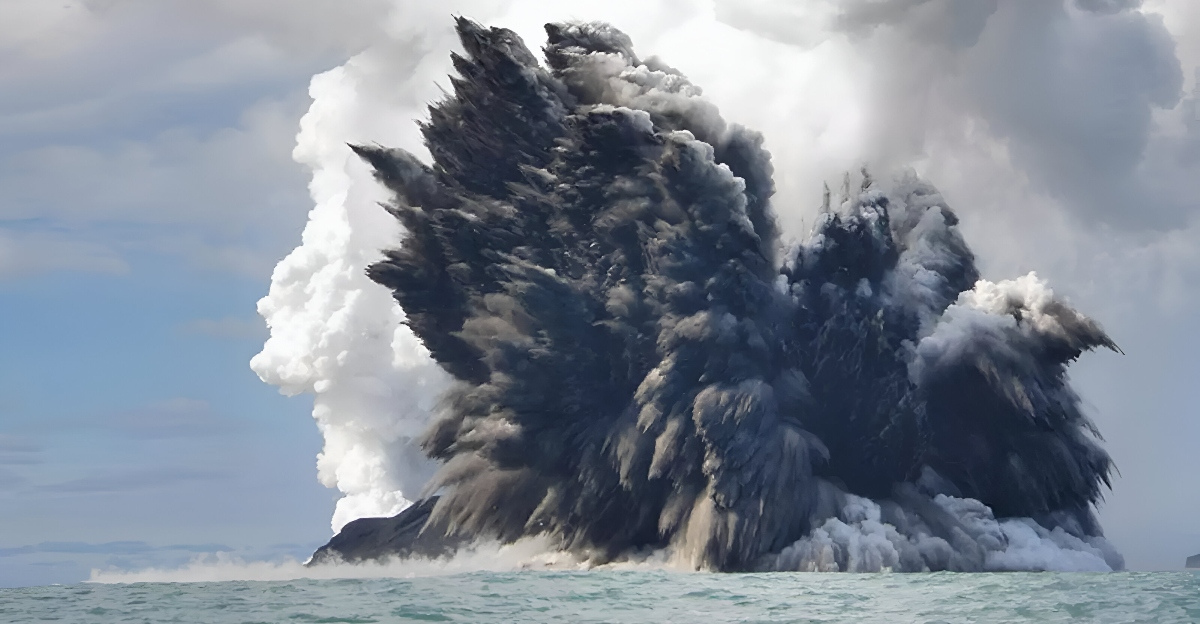
A major volcanic threat is quietly building beneath the Pacific Northwest and is on the verge of making a splash. Deep beneath the Pacific Ocean, nearly 300 miles off the Oregon coast, the Axial Seamount is showing clear signs of an impending eruption, with researchers predicting it could erupt before the end of 2025.
Scientists monitoring this volcano through the world’s largest ocean observatory, the Cabled Array, have detected rising seismic activity, gas emissions, and ground inflation-key indicators that magma is building beneath the seafloor. Unlike explosive terrestrial volcanoes, Axial’s eruptions are expected to be gentle lava flows, posing no direct threat to coastal communities.
Everything You Need To Know About Axial Seamount

This is a submarine shield volcano located about 300 miles off the coast of Oregon. It rests roughly 4,626 feet below the Pacific Ocean’s surface on the Juan de Fuca Ridge. It stands about 3,609 feet tall and is the youngest and most active volcano in the Cobb–Eickelberg Seamount chain.
Geologically complex, Axial sits at the intersection of a mid-ocean ridge spreading center and a geological hotspot. It features a distinctive rectangular caldera. The volcano’s flanks are marked by fissures, vents, and lava flows, making it one of the most dynamic underwater volcanic systems in the Northeast Pacific.
Signs of Imminent Eruption
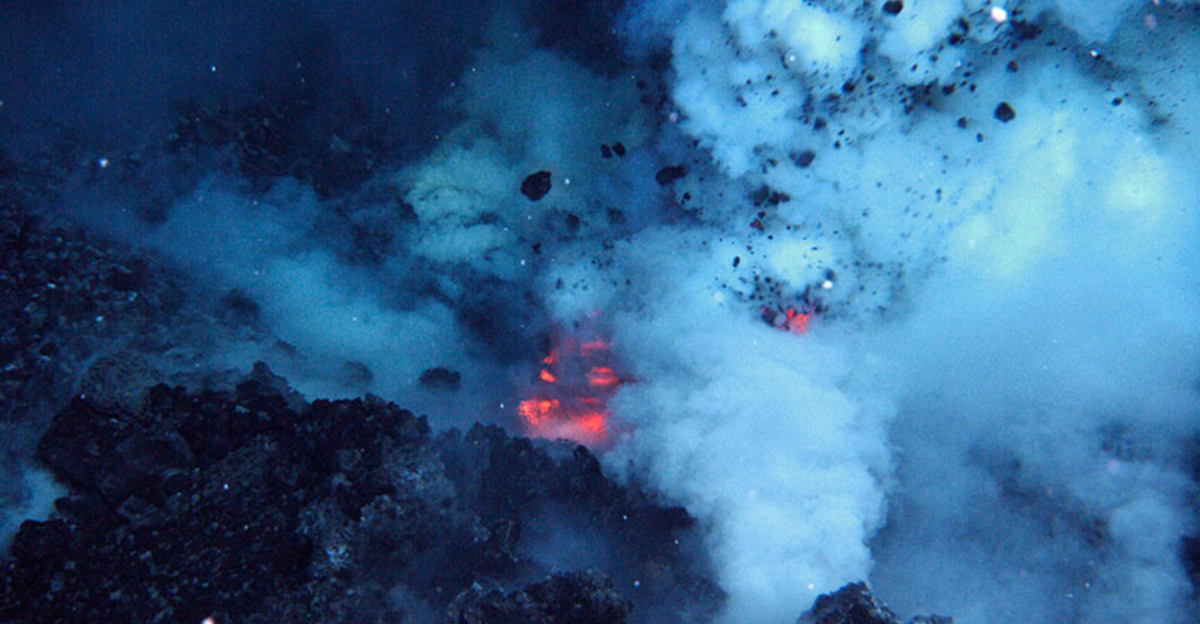
Signs of an eruption have become increasingly clear to scientists monitoring the volcano. Key indicators include a sharp rise in small undersea earthquakes-hundreds daily-caused by magma moving beneath the seafloor. This swelling mirrors the patterns observed before eruptions, suggesting magma is accumulating and pressuring the system.
Thanks to a dense network of sensors on the seamount’s summit and flanks, researchers can track these changes in real-time, leading many experts to predict that Axial could erupt by the end of 2025 or early 2026. “The volcano has inflated more than 20 cm, and we’ve seen this inflation before — we know how it ends,” said William Wilcock, a professor of oceanography at the University of Washington. “We’re now within a few months to a year of an eruption.”
Potential Impact on Marine Life
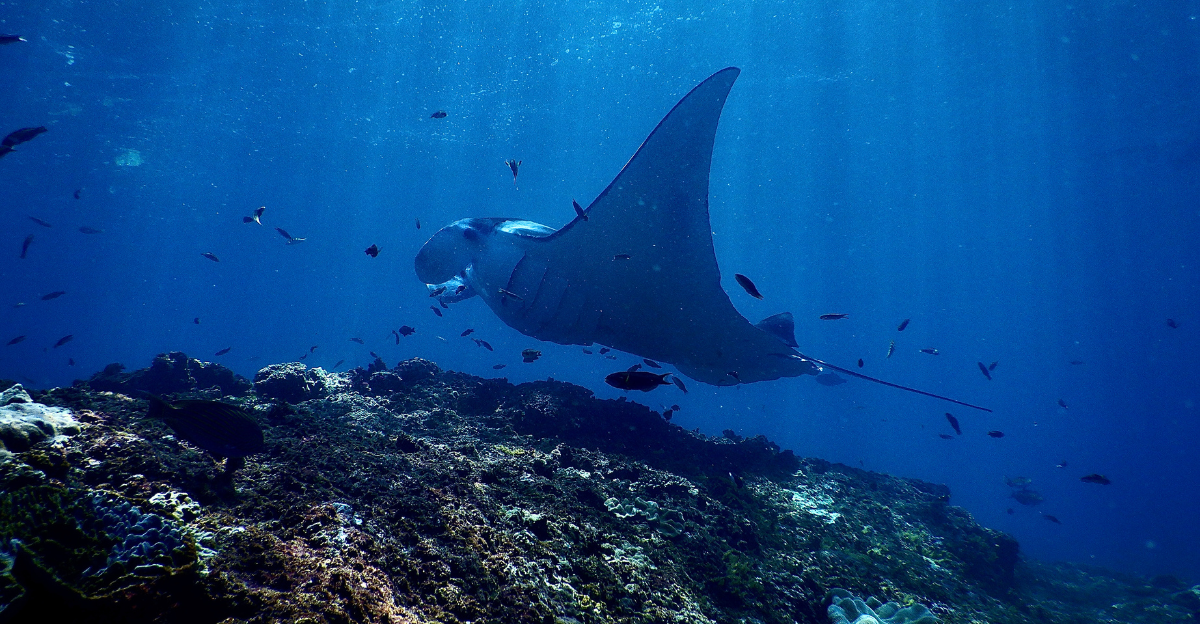
The volcano’s hydrothermal vents create unique habitats that support diverse organisms, from microbes that use volcanic gases for energy to larger species like tubeworms, crabs, and fish. An eruption would release lava, heat, and gases such as sulfur dioxide, altering water temperature and chemistry, which could disrupt or even kill some marine species.
“In 2011, we saw one of the venting areas become completely covered in lava flows,” said Deborah Kelley, another professor at the university. “It wiped everything out. But what’s fascinating is that when we returned three months later, animals and bacteria colonized the area again. They’re surprisingly resilient ecosystems.”
Monitoring Technology and Research Efforts
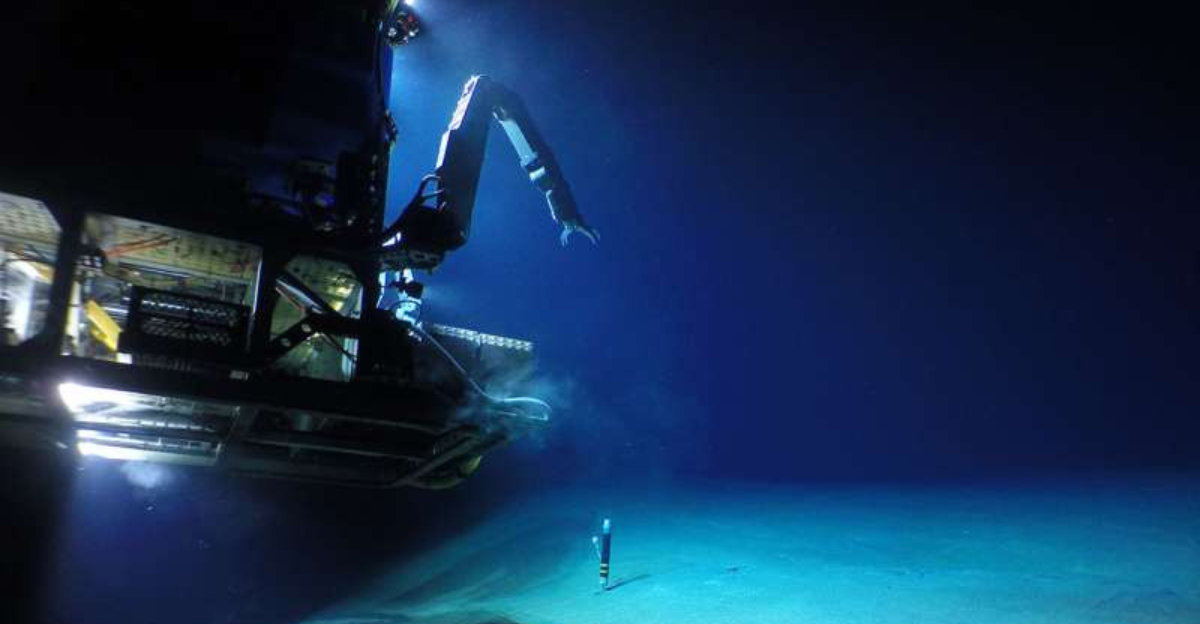
Monitoring technology at Axial Seamount represents the cutting edge of underwater volcanic research. It features a sophisticated cabled observatory equipped with an array of geophysical, chemical, and biological sensors. This network includes pressure sensors, seismometers, hydrophones, and high-definition cameras that continuously record data on seismic activity, seafloor deformation, hydrothermal vent chemistry, and marine life in real-time.
Advanced machine learning algorithms analyze seismic signals to detect volcanic unrest and forecast eruptions with unprecedented accuracy. The Ocean Observatories Initiative’s cabled array enables scientists to track magma movement, summit inflation, and earthquake swarms as they happen, providing critical early warnings and deep insights into submarine volcanic processes.
Differences from Land Volcanoes

Underwater, the immense pressure of the ocean suppresses explosive eruptions common on land, causing magma to cool rapidly upon contact with seawater and form distinctive pillow-shaped lava flows. Unlike many terrestrial volcanoes that erupt violently due to trapped gases, submarine eruptions tend to be gentler and produce basaltic lava with more primitive compositions, especially at mid-ocean ridges.
The presence of water also creates unique hydrothermal vent ecosystems around submarine volcanoes, supporting life forms that rely on chemical energy rather than sunlight.
Scientific Importance of Axial Seamount

Axial Seamount holds immense scientific importance as the most active and well-monitored submarine volcano in the Northeast Pacific. It is a natural laboratory where researchers can observe volcanic processes in unprecedented detail, thanks to the Ocean Observatories Initiative’s advanced cabled observatory that provides continuous real-time data on seismic activity, seafloor deformation, and hydrothermal vent chemistry.
The volcano’s predictable eruption cycles, documented in 1998, 2011, and 2015, have allowed scientists to forecast eruptions successfully, offering critical insights into magma dynamics and eruption triggers beneath the ocean floor.
Broader Volcanic Risks in the Pacific Northwest
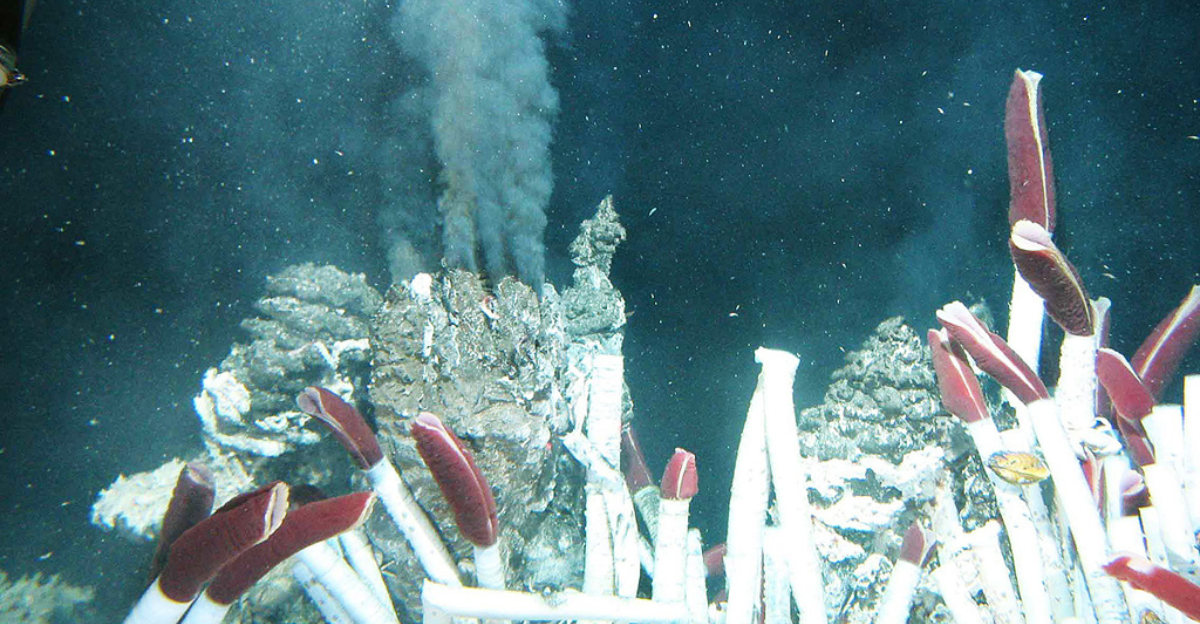
Beyond Axial Seamount’s underwater activity, the Pacific Northwest faces broader volcanic risks from its many well-known Cascade Range volcanoes, such as Mount Rainier, Mount St. Helens, and Mount Adams. These volcanoes pose significant hazards, including explosive eruptions, ashfall, and especially lahars, which are fast-moving volcanic mudflows that can occur suddenly without warning and are triggered by heavy rainfall, glacial melt, or seismic activity.
Lahars have historically caused devastating destruction and fatalities in the region, with Mount Rainier alone having produced dozens over the past 10,000 years. Despite extensive monitoring networks equipped with sensors and early-warning systems, communities near these volcanoes remain vulnerable due to the rapid onset of eruptions.
Monitoring Lahars and Land Volcanoes
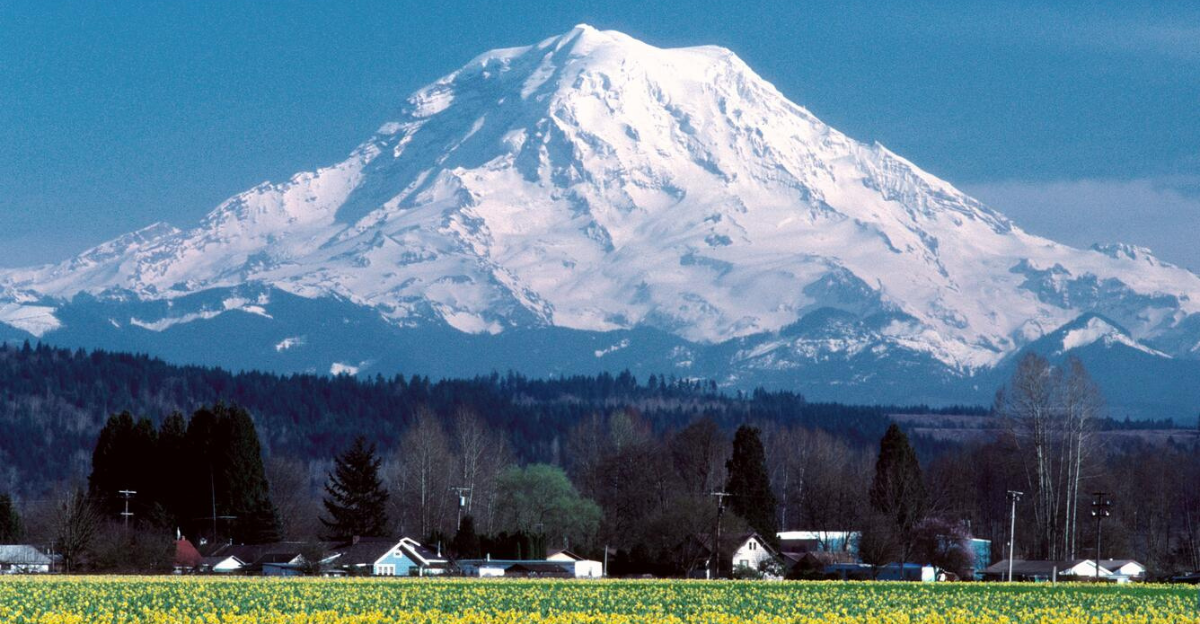
At Mount Rainier, one of the most hazardous volcanoes in the region, the USGS and local emergency agencies operate the Mount Rainier Volcano Lahar Warning System, which combines Acoustic Flow Monitors (AFMs) embedded underground to detect ground vibrations caused by lahars with All Hazard Alert Broadcast (AHAB) sirens to warn residents in affected river valleys. These AFMs continuously monitor seismic signals, triggering immediate alerts when a lahar is detected, allowing for rapid evacuation of tens of thousands of people who may have as little as 40 minutes to reach safety.
The system is supported by a network of over 20 monitoring stations equipped with seismometers, infrasound detectors, and tripwires to track lahar flow direction, height, and speed in real-time. Ongoing efforts aim to expand and upgrade this network to cover more drainage areas and improve the detection of smaller debris flows, ensuring robust situational awareness and timely warnings for no-notice lahars that can occur without prior volcanic unrest.
Balancing Awareness and Scientific Opportunity
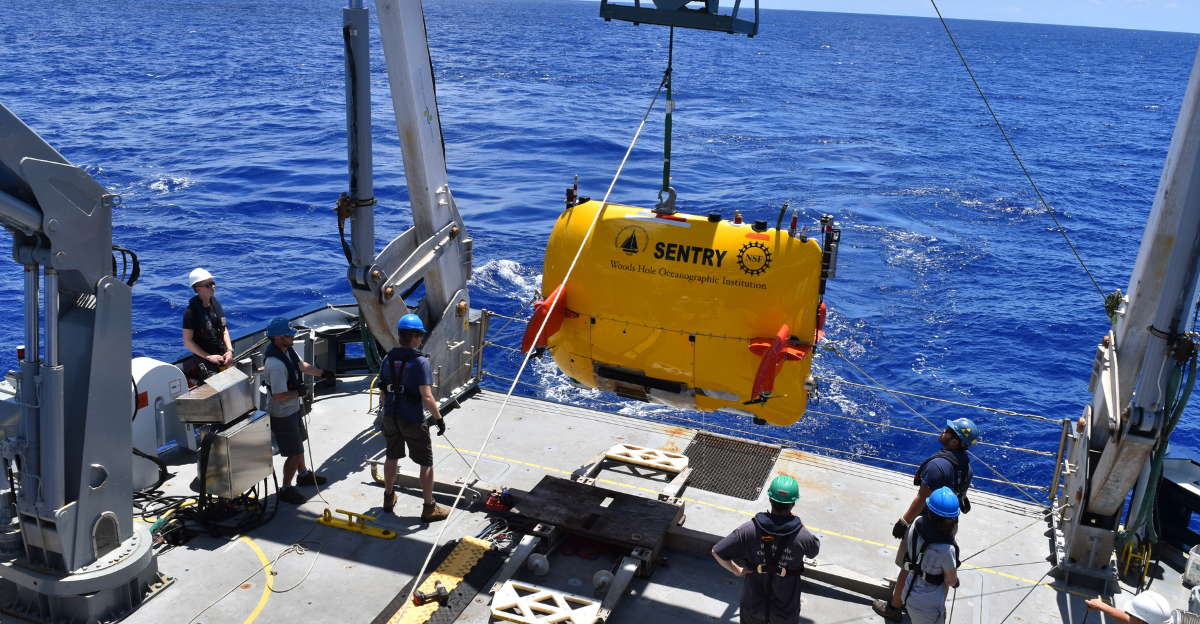
While the volcano’s imminent eruption poses no direct threat to people due to its deep-sea location, scientists emphasize the importance of studying its activity to improve eruption forecasting for more hazardous land volcanoes in the Pacific Northwest. Past experiences with false alarms at terrestrial volcanoes have shown that overly alarmist warnings can erode public trust and cause economic disruption, making careful communication essential.
At Axial, the absence of human risk allows researchers to focus on gathering detailed data and refining predictive models without the pressure of immediate public safety concerns.
Why Underwater Volcanoes Matter
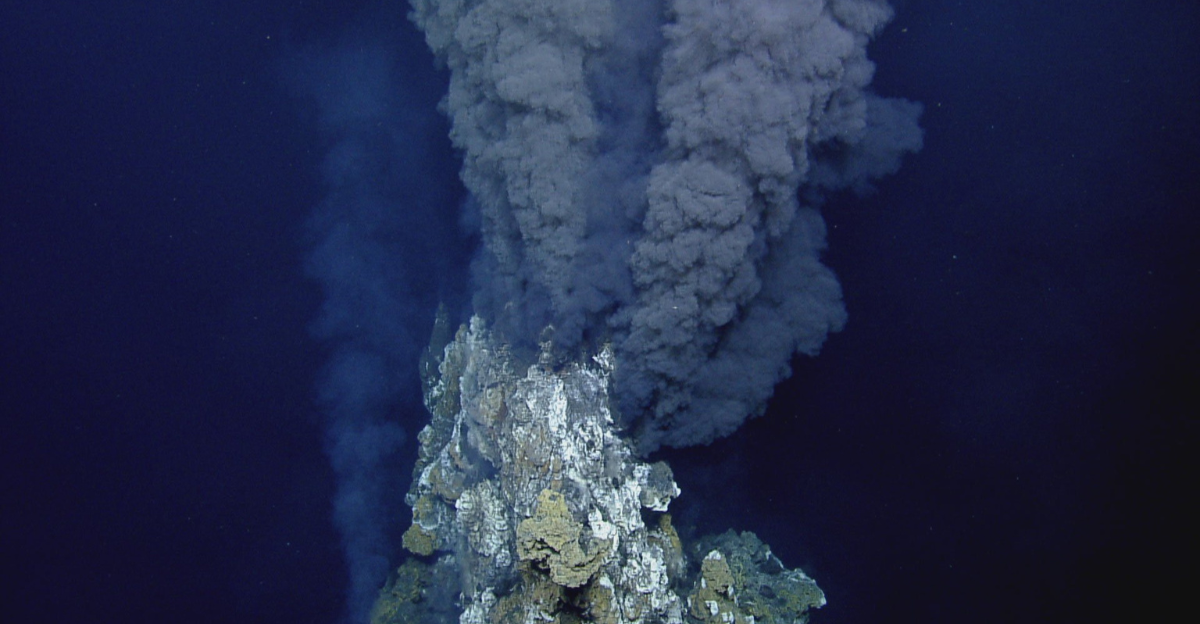
While the Pacific Northwest is famous for towering peaks like Mount St. Helens and Rainier, the real volcanic powerhouse is hidden underwater, shaping the seafloor and influencing oceanic and atmospheric systems. They generate new oceanic crust and cycle essential elements from the Earth’s interior to the surface, influencing global chemical cycles.
These volcanoes create unique hydrothermal ecosystems that host life forms relying on chemosynthesis rather than sunlight, revealing how life can thrive in extreme conditions and offering insights into the origins of life itself. Their eruptions also impact ocean temperature, water chemistry, and marine habitats, affecting biodiversity and potentially global climate patterns. “Most of the seafloor is relatively plain,” Kelley said. “But when you get to the vent fields, you realize that the volcano is an oasis of life.”
The Pacific ‘Ring of Fire’ Connection

Axial Seamount is part of the Pacific ‘Ring of Fire,’ the most volcanically active zone on Earth, where tectonic plates collide and create both underwater and terrestrial volcanic threats. This “Ring” is formed by the subduction of oceanic plates beneath continental plates, generating magma that fuels underwater and land volcanoes, including those in the Cascades and offshore submarine volcanoes.
The Pacific Northwest lies along the northern segment of this belt, where the Juan de Fuca Plate subducts beneath the North American Plate, creating a hotspot for volcanic threats both above and below the ocean surface.
Anatomy of Axial Seamount
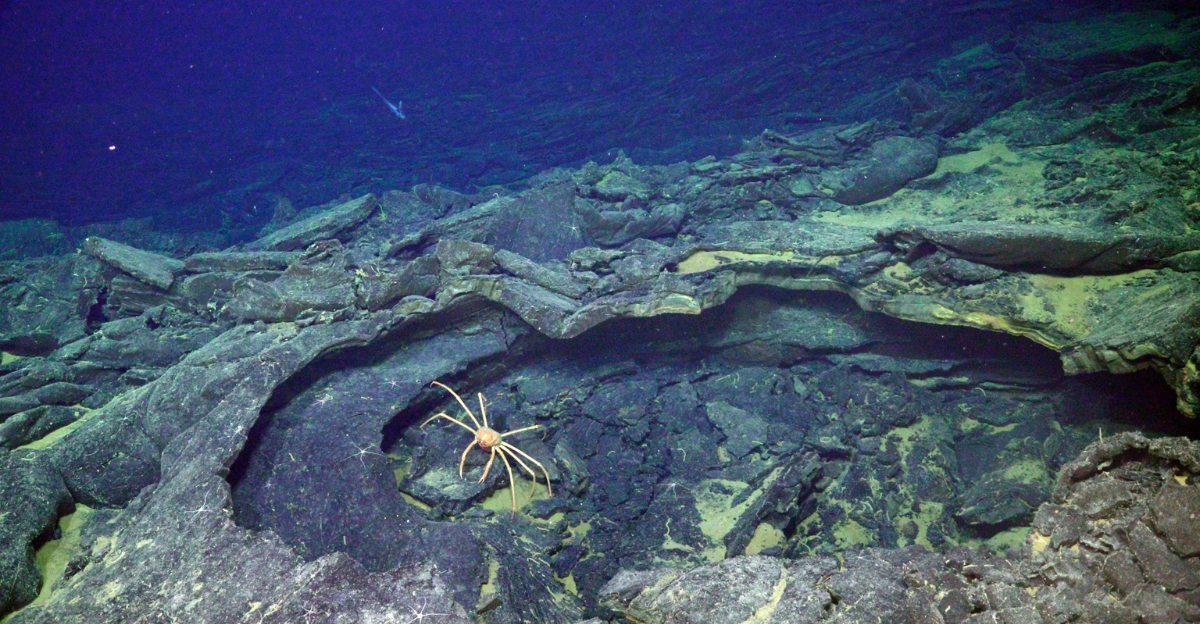
This massive underwater volcano is located about 300 miles off the Oregon coast. It has a large, unusual rectangular caldera about 1.8 by 5 miles, surrounded by deep boundary faults and two major volcanic rift zones stretching about 31 miles northeast and southwest. This seamount is part of the Juan de Fuca Ridge, where tectonic plates are pulling apart. It’s fueled by a mantle hotspot, making it one of the most active submarine volcanoes in the world.
Its complex structure includes fissures, lava flows, and hydrothermal vents that support unique marine ecosystems. Its frequent eruptions, recorded in 1998, 2011, and 2015, make it a natural laboratory for studying underwater volcanic activity and its impacts.
Eruption Style of a Shield Volcano
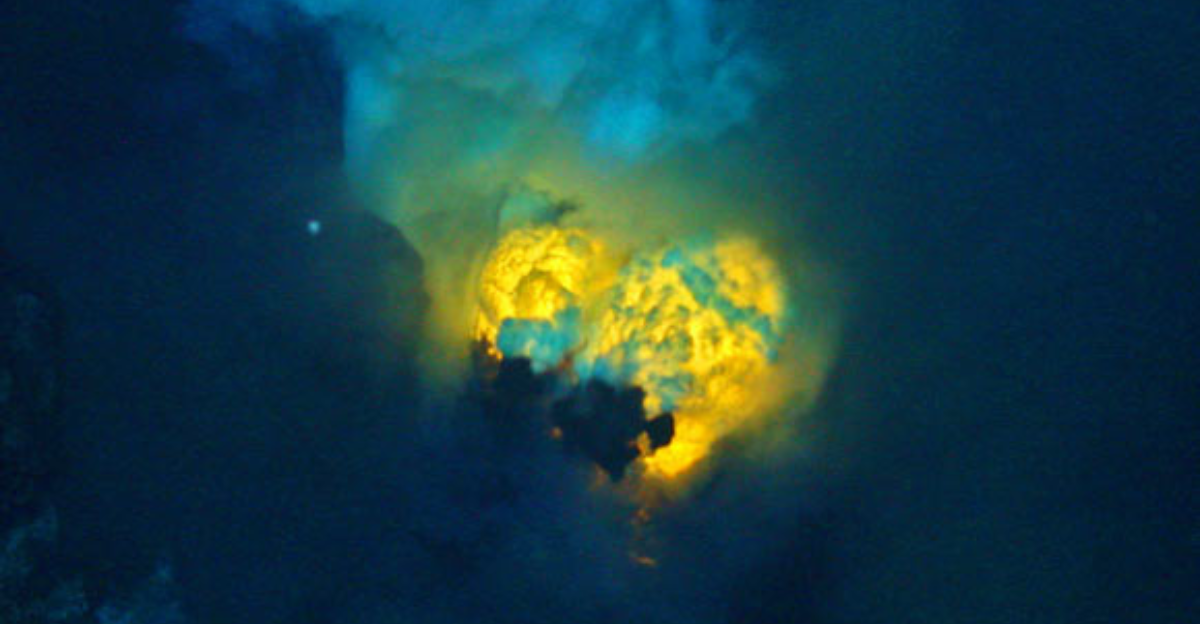
These eruptions are typically gentle and nonexplosive, and usually have a steady flow of highly fluid basaltic lava that can travel long distances before cooling and solidifying. These effusive eruptions often produce broad, thin lava flows that build up the volcano’s wide, gently sloping profile over time.
Eruptions can occur at the summit caldera and along fissures on the volcano’s flanks, sometimes creating spectacular lava fountains and fire curtains. Unlike explosive volcanoes, shield volcanoes rarely produce violent blasts unless water interacts with the magma, triggering steam-driven explosions.
Not Linked to “The Big One”
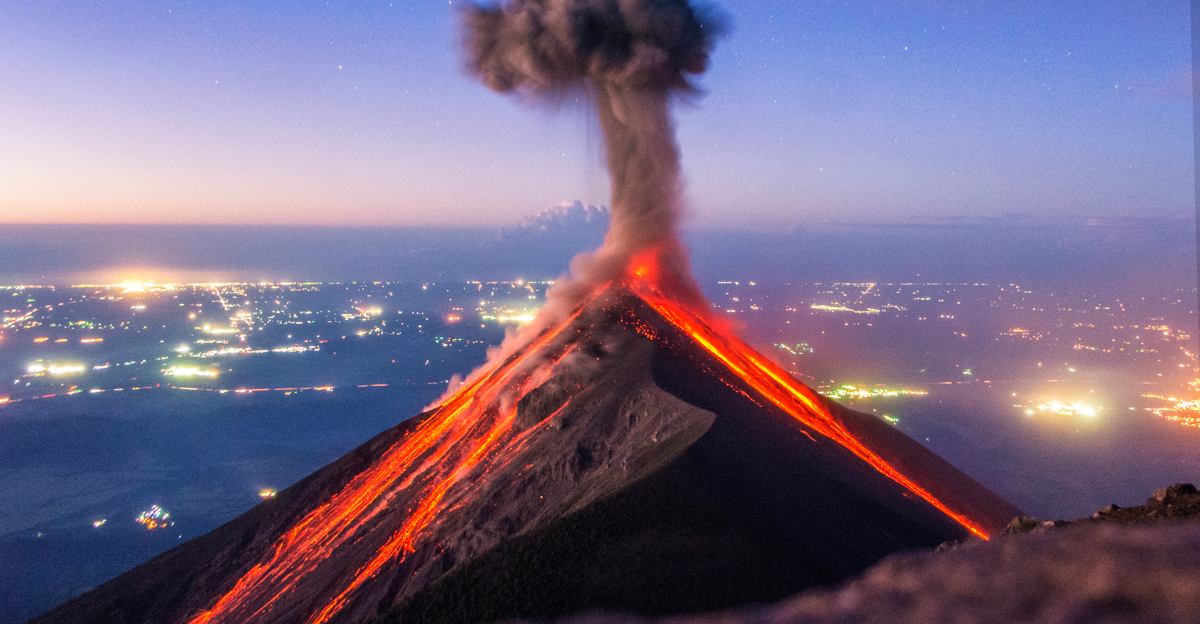
Axial Seamount’s volcanic activity is unrelated to the feared “Big One” earthquake along the Cascadia Subduction Zone. Unlike the massive fault line stretching from Northern California to British Columbia, where a major earthquake is expected, Axial sits farther offshore on the Juan de Fuca Ridge, a different tectonic setting.
This separation reassures scientists and the public that while Axial’s eruptions are closely monitored, they do not pose a tsunami threat or increase the likelihood of the catastrophic earthquake known as “The Big One.”
Out of Sight, Not Out of Mind
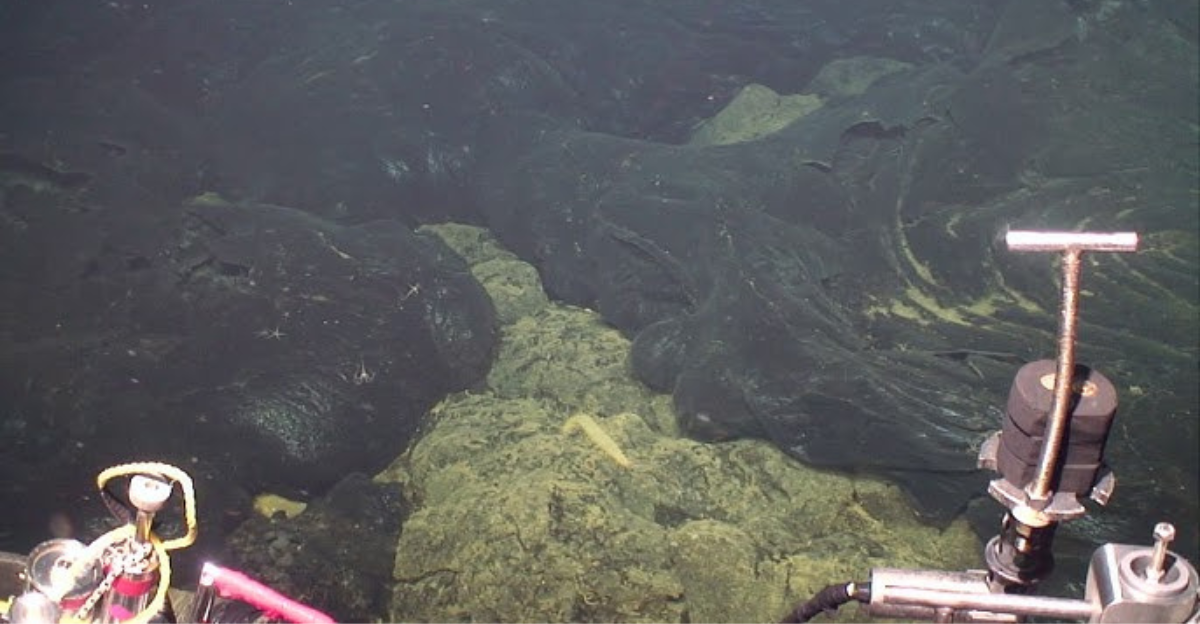
Though hidden beneath the ocean surface, underwater volcanoes like Axial Seamount are far from forgotten. Axial’s eruptions can reshape the seafloor, release gases, and impact marine ecosystems, with effects potentially reaching the surface. The release of magma and volcanic gases like sulfur dioxide can change local water temperature and chemistry, disrupting aquatic ecosystems. Some species may suffer, while others could thrive around new heat and chemical sources.
Conversely, submarine cables and scientific instruments near the volcano could be damaged, potentially disrupting communications and research.
Regional Cabled Array
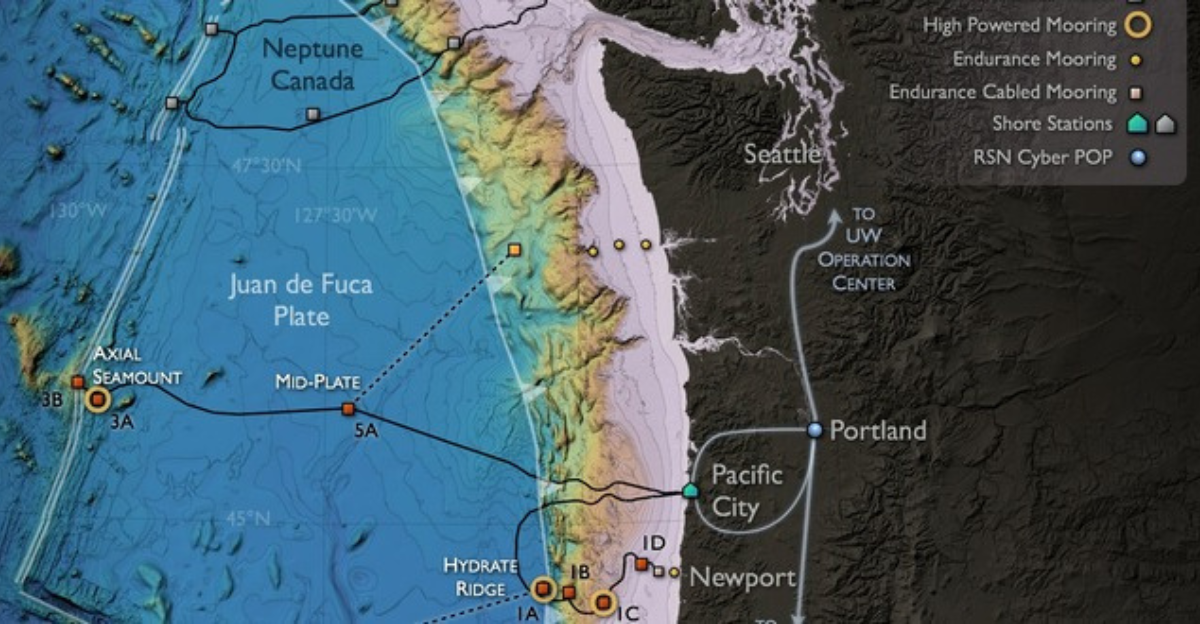
The Regional Cabled Array (RCA) is a cutting-edge underwater observatory that continuously monitors Axial Seamount and the surrounding Juan de Fuca Ridge in real time. Using over 140 connected instruments powered by a 900-kilometer network of electro-optical cables, the RCA provides high-bandwidth, two-way communication between seafloor sensors and shore-based scientists.
This system includes seismometers, hydrophones, pressure and tilt sensors, chemical analyzers, and high-definition cameras that track volcanic activity, hydrothermal vent chemistry, and biological communities. The data streams 24/7, allowing researchers to instantly detect volcanic inflation, seismic swarms, and fluid changes.
Geological Complexity
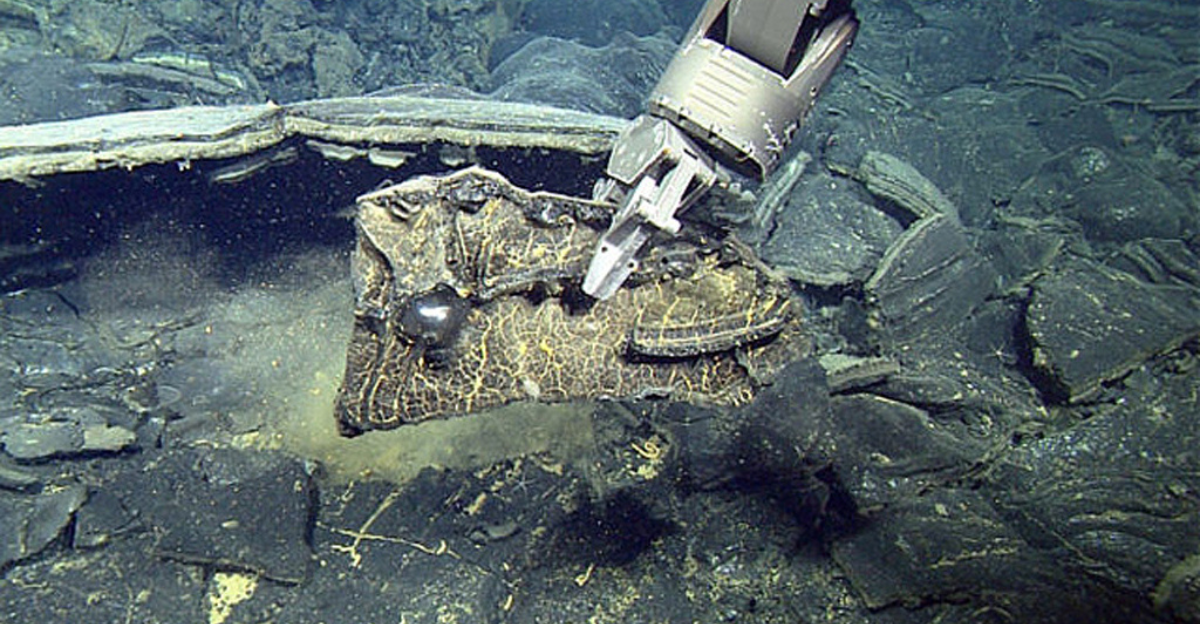
Unlike typical, more circular seamounts, Axial features an unusual rectangular caldera with steep boundary faults and is surrounded by multiple volcanic rift zones extending tens of miles. Its flanks are pockmarked with fissures, vents, lava flows, and pit craters, while the seamount’s growth has overlapped and interacted with several smaller nearby seamounts, adding to its irregular shape.
Beneath the surface, an asymmetric magma plumbing system with multiple reservoirs feeds its eruptions, further complicating its structure. This combination of hotspot activity, mid-ocean ridge spreading, and interactions with adjacent seamounts makes Axial one of the most geologically complex and fascinating underwater volcanoes in the North Pacific.
Seismic Swarms
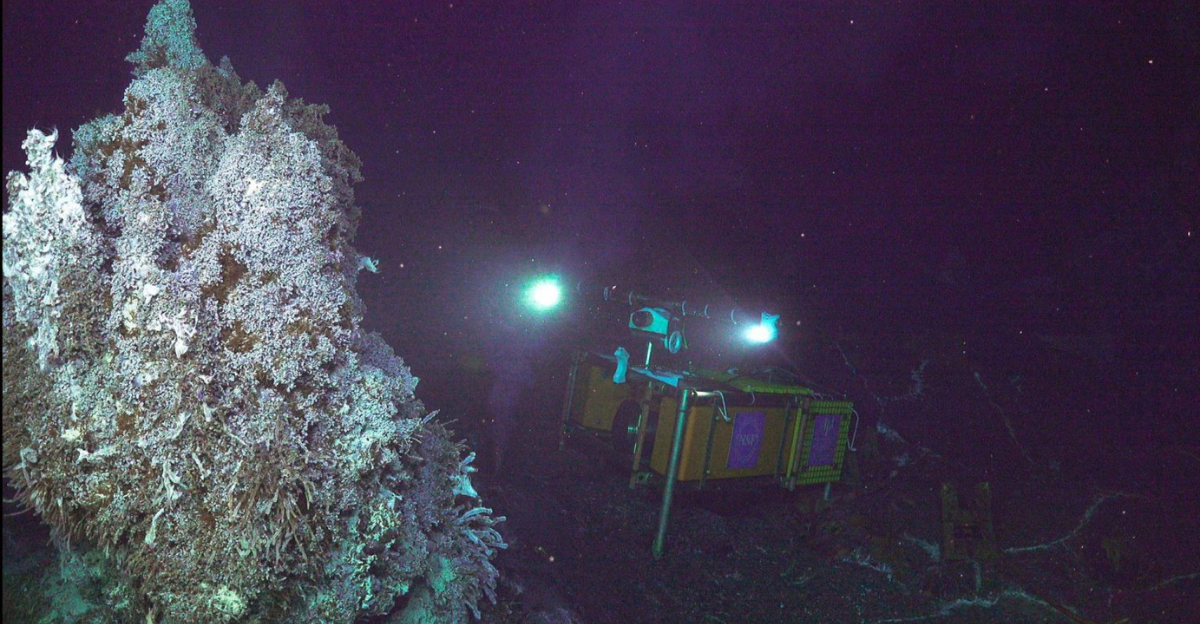
Seismic swarms are a hallmark of Axial Seamount’s volcanic activity. They often signal magma movement beneath the volcano before an eruption. These swarms consist of hundreds to thousands of small earthquakes occurring over days or weeks.
The earthquakes typically begin near the summit and then migrate along the volcanic rift zones, reflecting the injection of magma into fractures and the gradual pressure buildup. Monitoring these swarms through underwater hydrophones and seafloor sensors provides critical early warning of eruptive activity.
Limited To No Warning Before An Eruption

Unlike land volcanoes, underwater eruptions are harder to detect without advanced instrumentation, making real-time monitoring essential for early warning. Unlike terrestrial volcanoes, where ash clouds and lava flows provide visible signs, submarine eruptions can begin suddenly, producing seismic swarms and subtle seafloor deformation that require specialized instruments to detect.
The challenge lies in monitoring these remote, harsh environments, where rapid changes can happen without obvious surface clues. Thanks to the Ocean Observatories Initiative’s Regional Cabled Array, scientists can track seismic activity, ground inflation, and chemical changes.
Explore more of our trending stories and hit Follow to keep them coming to your feed!

Don’t miss out on more stories like this! Hit the Follow button at the top of this article to stay updated with the latest news. Share your thoughts in the comments—we’d love to hear from you!







